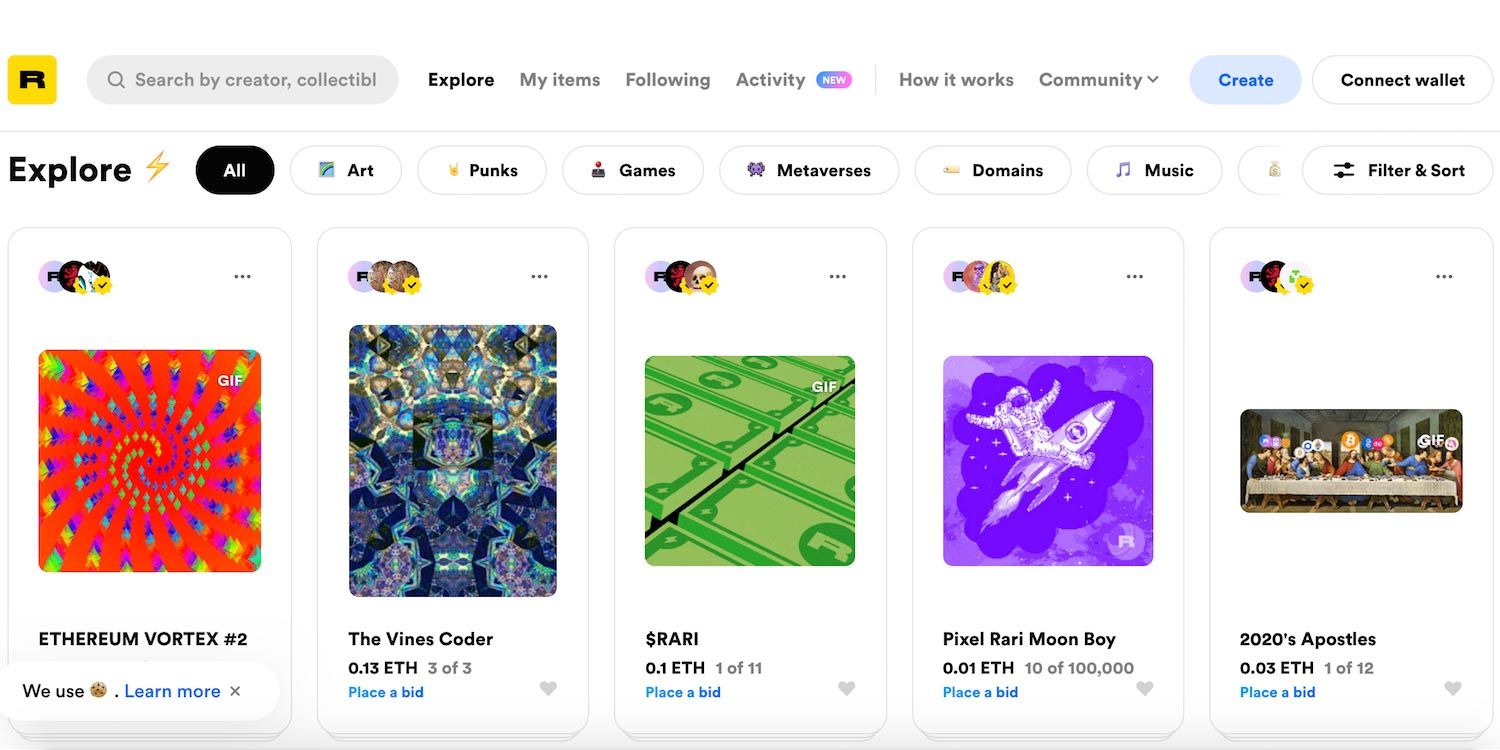Blockchain technology is revolutionizing the ownership of digital items. Non-fungible tokens (NFTs) may seem similar to cryptocurrencies at first glance, but they differ in that one token cannot be exchanged for another. Each NFT represents a unique digital item.
In real-life applications, NFTs are now being used to establish ownership of digital items, thus creating digital scarcity. Some of the digital assets that NFTs are being used to purchase range from artwork to video highlights.
Here are some of the places where you can purchase your own digital items using NFTs.
1. Rarible

Rarible is a community-owned NFT marketplace that connects 20,000 creators and collectors. Rarible has its own governance token, RARI, that it distributes to community members. RARI gives active members the power to influence the direction of the platform, such as voting for platform upgrades.
Rarible’s sorts Hot bids and Hot collections on its user-friendly front page. Under the Explore category, you can find a variety of digital assets for sale including art, game cards, virtual real estate, domain names, and music.
You even have the option to create an NFT on Rarible for your digital item without putting it up for sale.
2. Nifty Gateway

Nifty Gateway prides itself on being an ultra-exclusive platform where Nifties are the first to know about exclusive drops from artists, athletes, brands, and creators.
Drops are sold directly by creators such as T.J. Miller and Steve Aoki, with the possibility to be re-sold on Nifty Gateway’s own secondary market.
In contrast to other NFT marketplaces, Nifty Gateway allows bids to be made in USD from your credit card.
3. OpenSea

OpenSea describes itself as the largest NFT marketplace for digital goods. It specializes in 200 categories of digital assets that include gaming items, domain names, collectibles, and art.
Ethereum (ETH) is the most popular form of payment, however, OpenSea accepts payment in a number of other cryptocurrencies as well.
Recently, OpenSea created a way for creators to create NFTs free-of-charge through a process called lazy minting. This means the token is not actually minted until it is purchased—only then will the buyer pay the minting fee.
4. Foundation

Foundation made its mark when a fierce bidding war fetched $ 580,000 for Nyan Cat.
Placing itself at the forefront of “The New Creative Economy,” Foundation aims to bring together digital creators, cryptocurrency enthusiasts, and collectors.
Users can discover digital artwork and featured creators under their respective on-page tabs. Bids are made in ETH which is held in MetaMask (the cryptocurrency wallet Foundation uses).
5. MakersPlace

MakersPlace is a rare digital art marketplace dedicated to bringing together original digital creations from the world’s most creative minds. It aims to help digital creators protect and sell limited edition digital works to fans and collectors.
MakersPlace is different from other NFT marketplaces because it specializes in digital art.
MakersPlace is easily accessible to anyone who doesn’t hold cryptocurrency, as it has partnered with Stripe to support credit card payments worldwide.
6. SuperRare

SuperRare connects artists and collectors to trade unique artworks on its marketplace.
In addition to letting customers purchase directly from artists, SuperRare also empowers creators on the secondary market by giving a 3 percent commission from secondary sales. This is powered by smart contracts, similar to traditional royalties an artist would collect.
Collecting artworks on SuperRare is easy—just sign up and connect your Ethereum wallet.
The Future of NFTs
With sales blazing in gaming, sport, art, and collectible digital items, NFTs are poised to disrupt the e-commerce landscape—they’ve managed to succeed in attaching a price to the aesthetic and emotional value of digital items.
Although NFT technology is still in its infancy, it already offers promising prospects for the future.



